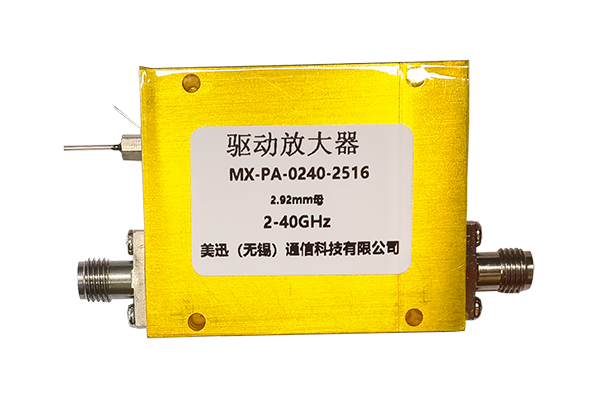
Pin diodes have become a crucial element in high-frequency systems because of their innate electrical traits Their high-speed switching performance and low capacitance along with negligible insertion loss position them well for switch modulator and attenuator implementations. The fundamental operating principle of PIN diode switching rests on adjusting current flow with a control bias. The applied voltage modifies the depletion layer thickness at the p–n interface thus affecting conductivity. Controlling the bias point makes it possible for PIN diodes to switch at microwave frequencies with low distortion
PIN diodes are often used in elaborate circuit arrangements where strict timing and control are essential They are effective in RF filter designs to allow selective passage or rejection of designated frequency ranges. Moreover their high-power handling capability renders them suitable for use in amplification division and signal generation stages. The trend toward miniaturized highly efficient PIN diodes has broadened their applicability in modern technologies like wireless communications and radar
Performance Considerations for Coaxial Switch Engineering
Developing coaxial switches is complicated and depends on careful analysis of key parameters A switch’s performance is determined by its type frequency range and how well insertion loss is controlled. Coaxial switch optimization emphasizes low insertion loss combined with high interport isolation
To analyze performance one must evaluate metrics such as return loss insertion loss and isolation. Evaluation is achieved through simulation studies analytical models and hands on experiments. Thorough analysis is critical for confirming reliable coaxial switch performance
- Simulation packages analytic approaches and lab experiments are commonly applied to analyze coaxial switch designs
- Factors such as temperature variations impedance mismatch and fabrication tolerances can impact switch behavior
- Novel developments and recent trends in coaxial switch design pursue performance gains alongside miniaturization and power savings
Optimizing Low Noise Amplifier Architectures
Refining the LNA for better performance efficiency and gain underpins superior signal fidelity in systems This calls for deliberate active device selection bias strategies and topological design choices. A strong LNA design reduces noise contribution and boosts signal amplification with minimal distortion. Analytical and simulation tools are vital for studying how design variations affect noise. Securing a low Noise Figure indicates superior capability to amplify while adding little noise
- Picking transistors known for minimal noise contribution is essential
- Setting proper and optimal bias parameters is necessary to suppress noise in active devices
- The chosen circuit topology plays a major role in determining noise behavior
Tactics like impedance matching noise mitigation and feedback regulation advance LNA performance
Signal Path Control Using Pin Diodes

PIN diode switches serve as practical and efficient solutions for directing RF signals in many systems Fast state changes in these devices permit agile dynamic routing of RF signals. PIN diodes provide the dual benefit of small insertion loss and high isolation to protect signals. Use cases include antenna selection duplexer networks and phased array antennas
A control voltage governs resistance levels and thereby enables switching of RF paths. The deactivated or off state forces a high resistance barrier that blocks RF signals. Forward biasing the diode drops its resistance allowing the RF signal to be conducted
- Additionally PIN diode switches yield high switching speed low power draw and compact footprint
PIN diode switch networks can be configured in multiple architectures and designs to support complex routing tasks. By interconnecting multiple switches designers can build dynamic switching matrices for flexible path configuration
Performance Efficacy Assessment of Coaxial Microwave Switches

Thorough assessment and testing of coaxial microwave switches are necessary to guarantee reliable system operation. Many various diverse factors determine the switches’ performance including insertion reflection transmission loss isolation switching speed and bandwidth. An exhaustive evaluation procedure measures these parameters across varied operating environmental and test conditions
- Additionally the evaluation should incorporate reliability robustness durability and capacity to handle severe environmental conditions
- Ultimately the conclusions of a detailed evaluation deliver important valuable critical intelligence for choosing designing and refining switches for specific tasks
Thorough Review of Noise Reduction Methods for LNAs
Low noise amplifier designs are vital to RF wireless systems for amplifying weak signals and controlling noise. The article delivers a wide-ranging examination analysis and overview of methods used to reduce noise in LNAs. We explore investigate and discuss principal noise contributors like thermal shot and flicker noise. We also cover noise matching feedback network techniques and ideal bias strategies to mitigate noise. The review highlights recent progress in LNA design including new semiconductor materials and circuit concepts that lower noise figures. By giving a clear understanding of noise reduction principles and practices this article aims to assist researchers and engineers in developing high performance RF systems
Applications of PIN Diodes for Fast Switching

They possess unique remarkable and exceptional qualities beneficial for high speed switching Minimal capacitance and low resistance support rapid switching speeds for applications needing accurate timing. Their proportional voltage response enables controlled amplitude modulation and reliable switching behavior. Their adaptability flexibility and versatility qualifies them as suitable applicable and appropriate for broad high speed uses Typical domains include optical communication systems microwave circuitry and signal processing hardware and devices
Coaxial Switch Integration with IC Switching Technology
Integrated coaxial switch IC designs improve signal routing processing and handling across electronic systems circuits and devices. These specialty ICs are engineered to control manage and direct signal flow through coaxial cables offering high frequency performance and low latency propagation insertion times. IC miniaturization enables compact efficient reliable and robust designs ideal for dense interfacing integration and connectivity needs
- By meticulously carefully and rigorously applying these methods developers can produce LNAs with superior noise performance enabling sensitive reliable electronics By meticulously carefully and rigorously applying these methods developers can produce LNAs with superior noise performance enabling sensitive reliable electronics Through careful meticulous and rigorous implementation of these approaches engineers can achieve LNAs with exceptional noise performance supporting sensitive reliable systems With careful meticulous and rigorous deployment of these approaches developers can accomplish LNAs with outstanding noise performance enabling trustworthy sensitive electronics
- Applications cover telecommunications data networking and wireless communication systems
- Integration of coaxial switch ICs serves aerospace defense and industrial automation industries
- Application examples include consumer electronics audio video products and test measurement systems
Low Noise Amplifier Design for mmWave Systems

Design of LNAs at millimeter wave frequencies requires mitigation of higher signal loss and noise influence. Parasitic capacitances and inductances become major factors at mmWave demanding careful layout and parts selection. Minimizing mismatch and maximizing gain remain critical essential and important for mmWave LNA performance. Device selection including HEMTs GaAs MESFETs and InP HBTs plays a decisive role in attaining low noise figures at mmWave. Further the design implementation and optimization of matching networks remains vital to achieve efficient power transfer and proper impedance matching. Paying attention to package parasitics is necessary since they can degrade LNA performance at mmWave. Selecting low-loss transmission paths and optimal ground plane layouts is essential necessary and important for reducing reflection and preserving bandwidth
PIN Diode RF Switching Characterization and Modeling
PIN diodes exist as key components elements and parts in several RF switching applications. Thorough precise and accurate characterization of these devices is essential for designing developing and optimizing reliable high performance circuits. Part of the process is analyzing evaluating and examining their electrical voltage current characteristics like resistance impedance and conductance. Also characterized are frequency response bandwidth tuning capabilities and switching speed latency response time
Additionally the development of accurate models simulations and representations for PIN diodes is vital essential and crucial for predicting their behavior in RF systems. A range of modeling approaches including lumped element distributed element and SPICE models are used. The choice of model simulation or representation hinges on the specific application requirements and the desired required expected accuracy
coaxial switchSophisticated Advanced Methods for Minimal Noise Amplifiers
Designing low noise amplifiers necessitates detailed attention to topology and component choice to reach best noise figures. Emerging novel semiconductor developments have allowed innovative groundbreaking sophisticated design strategies that cut noise considerably.
Some of the techniques include using implementing and employing wideband matching networks selecting low noise transistors with high intrinsic gain and optimizing biasing schemes strategies or approaches. Additionally advanced packaging and thermal management practices are critical for minimizing external noise influences. Through careful meticulous and rigorous application of such methods engineers can design LNAs with top tier noise performance enabling dependable sensitive systems
